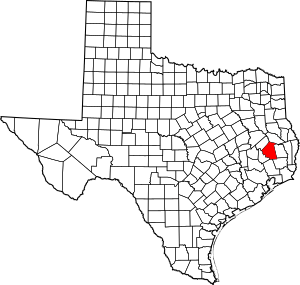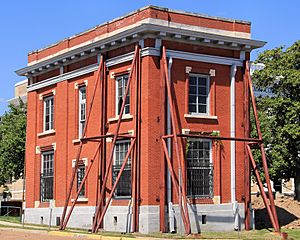National Register of Historic Places listings in Polk County, Texas facts for kids
This article is about some really special places in Polk County, Texas, that are listed on the National Register of Historic Places. This register is like a special "hall of fame" for buildings, sites, and objects across the United States that are important because of their history, architecture, or what they mean to our country's story. When a place is on this list, it means it's recognized as a valuable part of our heritage and should be protected for future generations. In Polk County, there are two amazing places that have earned a spot on this important list.
Historic Places in Polk County
Polk County is home to two unique properties that have been recognized for their historical significance. These places tell us a lot about the past and how people lived and worked in this part of Texas.
William Keenan and Nancy Elizabeth McCardell House
- Location: 705 N. Beatty, Livingston
- Listed: August 10, 2005
The William Keenan and Nancy Elizabeth McCardell House is a beautiful historic home located in Livingston. It was added to the National Register of Historic Places in 2005. This house is important because it represents the architectural styles and way of life from a specific time in Polk County's history. Homes like this often show us how families lived, what materials they used, and the craftsmanship of the era. It's a great example of the kind of buildings that were important to the community's development.
Polk County Courthouse and 1905 Courthouse Annex
- Location: Washington at Church Street, Livingston
- Listed: February 2, 2001
The Polk County Courthouse and its 1905 Courthouse Annex are very important buildings in Livingston. Courthouses are often the center of a county's government and community life. They are where important decisions are made, laws are upheld, and local history unfolds. This particular courthouse, along with its annex built in 1905, tells a story of how the county has grown and changed over more than a century. Its architecture and long history make it a significant landmark in Polk County. It was added to the National Register of Historic Places in 2001, recognizing its role in the county's past and present.




